+44 (0)1634 791600
info@crystal-display.com
Newsletter Sign Up!
+44 (0)1634 791600
info@crystal-display.com




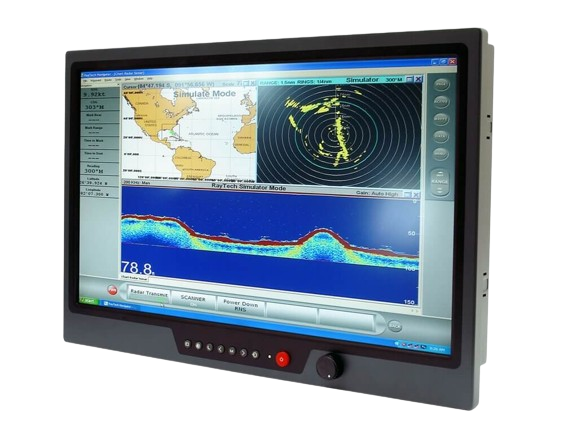
CDS introduces its latest series of Marine IP65 waterproof monitors, featuring bright screens that have garnered global acclaim for surpassing expectations. This innovative line offers an exceptional choice for maritime professionals and organizations operating in nautical settings. Whether it’s system construction, upkeep, repairs, or equipment enhancements for yachts, submarines, boats, or other maritime installations, the CDS marine monitor ensures superior quality and performance across every aspect, from dockside to engine rooms. Ideal for ECDIS, radar, and conning applications within integrated bridge systems, it delivers unparalleled reliability and functionality.
Waterproof marine displays are essential for maritime environments where exposure to water and harsh conditions is unavoidable. These robust devices, often featuring rugged LCD displays, ensure optimal performance and visibility even in the most challenging settings. For enhanced functionality, a rugged touch screen monitor offers seamless interaction, allowing users to operate equipment efficiently in demanding situations. Together, these advanced technologies provide durability and reliability, making them indispensable for marine applications.
CDS designs rugged marine monitors engineered to endure extreme weather and temperature conditions. Our selection includes waterproof, sunlight-readable screens with full-range dimming, ensuring reliable performance in harsh environments.

A marine monitor is a type of display specifically designed and engineered for use in maritime environments. These monitors are built to withstand the challenges posed by the marine industry, including exposure to water, salt, extreme temperatures, and vibrations. Marine monitors typically feature waterproof and ruggedized construction to ensure durability and reliability in harsh conditions encountered at sea.
They are commonly used in various marine applications such as navigation, radar systems, sonar displays, chartplotters, and integrated bridge systems on vessels like ships, yachts, boats, and submarines. Marine monitors often incorporate features such as high brightness, anti-glare coatings, wide viewing angles, and compatibility with marine-specific software and equipment.
Waterproof and rugged construction: Marine monitors are built with materials and seals that protect against water ingress, ensuring they remain functional even when exposed to moisture, splashes, or immersion in water. Their rugged construction makes them durable and resistant to damage from impacts, vibrations, and rough handling commonly encountered in marine environments.
High brightness: Marine monitors feature high levels of brightness to provide clear and visible display even in bright sunlight or other high ambient light conditions. This ensures that critical information displayed on the monitor remains legible and easily readable regardless of external lighting conditions.
Anti-glare coatings: These monitors are equipped with anti-glare coatings on their screens to reduce reflections and glare caused by sunlight or other sources of light. This helps improve visibility and readability by minimizing distractions and reflections that could obscure the displayed information.
Wide viewing angles: Marine monitors offer wide viewing angles, allowing users to view the screen clearly from various positions and angles without experiencing significant color shifts or distortion. This ensures that information displayed on the monitor remains visible and accurate regardless of the viewer’s position relative to the screen.
Compatibility with marine-specific software and equipment: Marine monitors are designed to seamlessly integrate with marine-specific software applications and equipment commonly used in navigation, radar systems, sonar displays, chartplotters, and other marine systems. This compatibility ensures smooth operation and efficient communication between the monitor and other onboard systems.
Resistance to vibrations and shock: Marine monitors are engineered to withstand vibrations and shock typically experienced in marine environments, such as those caused by waves, engine vibrations, or rough seas. This ensures that the monitor remains stable and functional even during rough conditions, minimizing the risk of damage or malfunction.
Temperature tolerance: Marine monitors are designed to operate reliably across a wide range of temperatures, including extreme heat or cold encountered in marine environments. This temperature tolerance ensures that the monitor remains operational and functional even in harsh environmental conditions without experiencing performance degradation or failure.
Compliance with industry standards: Marine monitors adhere to industry standards and certifications for reliability, performance, and safety, ensuring they meet the stringent requirements and regulations set forth for marine equipment.
Marine monitors are engineered with robust construction and specialized components to withstand the shock and vibration levels commonly encountered onboard vessels. They are designed to endure the constant motion, impacts, and vibrations associated with maritime operations, including rough seas, heavy waves, engine vibrations, and maneuvering maneuvers.
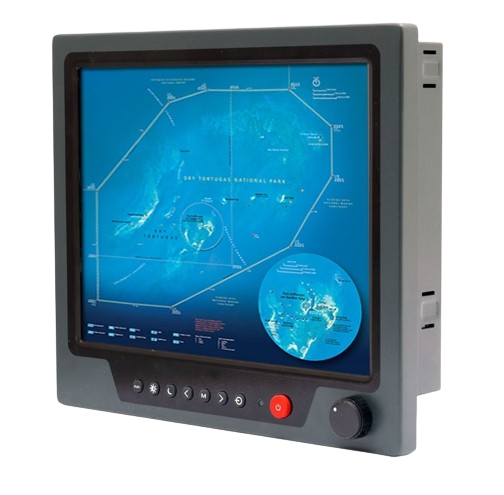
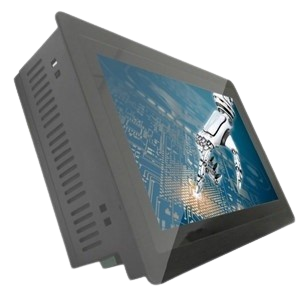
Optical bonding is a process where a transparent adhesive is used to bond the display panel to the cover glass or touchscreen, eliminating the air gap between them. Advanced optical bonding techniques involve using high-quality materials and precision manufacturing processes to achieve superior optical clarity, durability, and performance.
Sunlight readability refers to the ability of a monitor’s screen to remain visible and legible under direct sunlight or high ambient light conditions, without being washed out by glare or reflections. Sunlight-readable marine monitors are equipped with high-brightness displays, typically ranging from 1000 to 2000 nits or even higher.
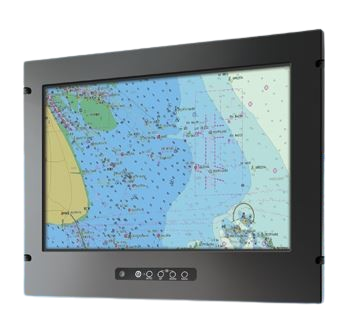
Navigation Systems: These include GPS (Global Positioning System) navigation devices, chartplotters, electronic chart display and information systems (ECDIS), and gyrocompasses used for precise positioning, route planning, and safe navigation.
Radar Systems: Marine radar systems use radio waves to detect and track nearby vessels, obstacles, and landmasses, providing crucial information for collision avoidance, navigation in low visibility conditions, and situational awareness.
Sonar Systems: Sonar technology is used for underwater navigation, detection of submerged objects, fish finding, depth measurement, and underwater imaging. Different types of sonar systems include fishfinders, depth sounders, and side-scan sonar.
Communication Systems: Marine communication systems encompass VHF (Very High Frequency) radios, AIS (Automatic Identification System), satellite communication systems, and emergency distress beacons (EPIRBs) used for ship-to-ship and ship-to-shore communication, as well as safety and distress signaling.
Safety and Alarm Systems: These include systems such as fire detection and suppression systems, bilge alarms, man-overboard alarms, and collision avoidance systems (e.g., Automatic Radar Plotting Aids) designed to enhance safety and respond to emergencies effectively.
Entertainment and Comfort Systems: Marine entertainment systems include audio/video entertainment systems, satellite TV, and internet connectivity solutions designed to provide onboard entertainment and enhance passenger comfort during voyages.
Monitoring and Control Systems: These systems encompass various monitoring and control solutions for vessel operations, including engine monitoring systems, fuel monitoring systems, HVAC (Heating, Ventilation, and Air Conditioning) systems, and ballast control systems.
Environmental Monitoring Systems: Environmental monitoring systems measure and track parameters such as water quality, weather conditions, and air quality to assess environmental conditions, comply with regulations, and ensure sustainable marine operations.
Security and Surveillance Systems: These systems include CCTV (Closed-Circuit Television) cameras, intrusion detection systems, and access control systems used for monitoring and securing the vessel, protecting assets, and enhancing onboard security.
Fishing and Aquaculture Equipment: Fishing vessels and aquaculture operations utilize specialized equipment such as fishfinders, trawl nets, longlines, and aquaculture cages for commercial fishing and fish farming activities.
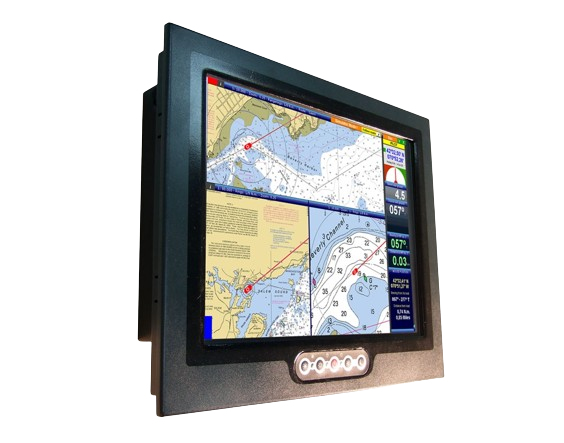
IP65 marine monitors are rugged displays designed for maritime environments, featuring a waterproof and dustproof construction with an IP65 rating. They offer high brightness, anti-glare coatings, and wide temperature tolerances to ensure clear visibility and reliability in harsh conditions. With shock and vibration resistance, versatile mounting options, and compliance with marine standards, these monitors provide essential functionality for navigation, communication, and monitoring onboard vessels.
| Size | Brightness | Resolution | Inputs | Input Voltage | Remarks (IP Rating) |
|---|---|---|---|---|---|
| 8.4 | 1000 | 800x600 | VGAx1 | DC input 9~36V | Waterproof IP68 & IP65 standards |
| 12.1 | 1000 / 1600 | 1024x768 | VGAx1, DVIx1, Compositex3, RS232x1, USBx1 | DC input 9~36V | IP65 waterproof (facial) when console mounted |
| 15 | 1000 / 1600 | 1024x768 | VGAx1, DVIx1, Compositex3, RS232x1, USBx1 | DC input 9~36V | IP65 waterproof (facial) when console mounted |
| 15 | 1000 / 1600 | 1024x768 | Audio phone jack (line-in, line-out, MIC-in) , RJ45x2, USBx4, COMx2 (RS232x1, RS232/422/485x1)x1, DVI-Ix1, VGA-outx1, KB/MS PS2x1, power AC-inx3 | AC input: AC 100~240V; DC input (optional) | IP65 waterproof (facial) when console mounted |
| 17 | 1000 / 1600 | 1280x1024 | VGAx2, DVIx2, Compositex3, RS232x1, USBx1 | DC input 9~36V | IP65 waterproof (facial) when console mounted |
| 17 | 1000 / 1600 | 1280x1024 | Audio phone jack (line-in, line-out, MIC-in) x1, RJ45x2, USBx4, COMx2 (RS232x1, RS232/422/485x1), DVI-Ix1, VGA-outx1, KB/MS PS2x1, power AC-inx3 | AC input: AC 100~240V; DC input (optional) | IP65 waterproof (facial) when console mounted |
| 19 | 1600 | 1280x1024 | VGAx2, DVIx2, Compositex3, RS232x1, USBx1 | DC input 9~36V | IP65 waterproof (facial) when console mounted |
| 19 | 1000 / 1600 | 1280x1024 | Audio phone jack (line-in, line-out, MIC-in) x1, RJ45x2, USBx4, COMx2 (RS232x1, RS232/422/485x1), DVI-Ix1, VGA-outx1, KB/MS PS2x1, power AC-inx3 | AC input: AC 100~240V; DC input (optional) | IP65 waterproof (facial) when console mounted |
| 21.5 | 1000 / 1600 | 1920x1080 | VGAx2, DVIx2, Compositex3, RS232x1 | DC input 9~36V | Fascial waterproof to IP65 standards when console mounted. |
| 24 | 1000 | 1920x1080 | VGAx2, DVIx2, Compositex3, RS232x1 | DC input 9~36V | Fascial waterproof to IP65 standards when console mounted. |
